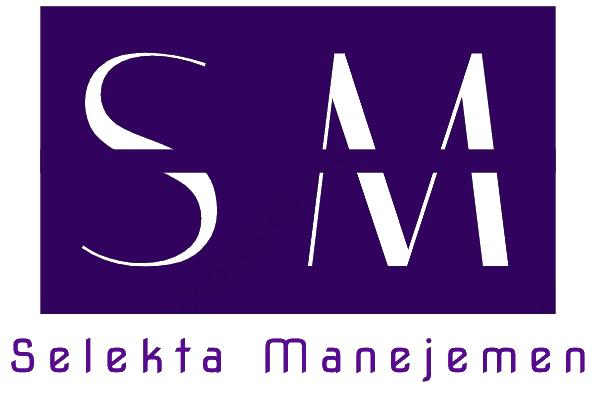Main Article Content
Abstract
Penelitian ini bertujuan untuk mengetahui pengaruh sense of community dalam membangun collaborative knowledge creation dan wisdom of the crowd. Selanjutnya, penelitian ini juga akan mengeksplorasi dampak dari collaborative knowledge creation dan wisdom of the crowd pada perceived value pada program vaksinasi Covid-19. Penelitian ini menggunakan variabel independen sense of community, wisdom of the crowd, dan collaborative knowledge creation, sedangkan variabel dependen yang digunakan, yaitu perceived value. Penelitian ini menggunakanpopulasi warga masyarakat. Penelitian ini menggunakan data primer yang bersumber dari hasil kuisioner yang diisi oleh responden, yaitu masyarakat sekitar. Data diolah menggunakan teknik analisis PLS-SEM. Hasil penelitian menunjukkan bahwa terdapat pengaruh positif dan signifikan yang diberikan oleh sense of community terhadap wisdom of crowd, terdapat pengaruh positif dan signifikan yang diberikan oleh sense of community terhadap wisdom of crowd, terdapat pengaruh positif signifikan yang diberikan oleh sense of community terhadap cpreceived value, tidak ditemukan pengaruh yang diberikan oleh wisdom of crowd terhadap precieved value, terdapat pengaruh positif signifikan yang diberikan oleh collaborative knowledge creation terhadap precieved value, danpenyebab tidak berpengaruhnya wisdom of crowd terhadap precieved value pada masyarakat sekitar dalam penelitian ini dapat disebabkan oleh ambiguitas wisdom of crowd itu sendiri.
Keywords
Article Details
Copyright (c) 2022 Fauzan Akbar, Anjar Priyono

This work is licensed under a Creative Commons Attribution-ShareAlike 4.0 International License.
References
- Al-Omoush, K.S., Orero-Blat, M. dan Ribeiro-Soriano, D. (2021) “The role of sense of community in harnessing the wisdom of crowds and creating collaborative knowledge during the COVID-19 pandemic,” Journal of Business Research, 132, hal. 765–774. Tersedia pada: https://doi.org/10.1016/j.jbusres.2020.10.056.
- Ali, M.M. dan Maideen, M.B.H. (2019) “A study on factors inluencing the adoption of a crowdsourcing mobile application among generation Y and Z in Maldives,” International Journal of Recent Technology and Engineering, 7, hal. 370–388.
- Azim, A.A. et al. (2021) “The Buffalo study: Outcome and associated predictors in endodontic microsurgery- a cohort study,” International Endodontic Journal, 54(3), hal. 301–318. Tersedia pada: https://doi.org/https://doi.org/10.1111/iej.13419.
- Boyd, N.M. dan Martin, E.C. (2022) “Sense of community responsibility at the forefront of crisis management,” Administrative Theory and Praxis, 44(1), hal. 71–83. Tersedia pada: https://doi.org/10.1080/10841806.2020.1765288.
- Budiarsi, S.Y. (2020) “Pendampingan Pengenalan Program SEM-PLS Pada Fakultas Ekonomi Universitas Merdeka Surabaya,” Jurnal Abdimas Peka, 3(2), hal. 126–134. Tersedia pada: http://journal.wima.ac.id/index.php/peka/article/view/3001.
- Dissanayake, I. et al. (2019) “Medical crowdsourcing: Harnessing the ‘wisdom of the crowd’ to solve medical mysteries,” Journal of the Association for Information Systems, 20(11), hal. 1589–1610. Tersedia pada: https://doi.org/10.17705/1jais.00579.
- Ghozali, I. dan Latan, H. (2015) Konsep, Teknik, Aplikasi Menggunakan Smart PLS 3.0 Untuk Penelitian Empiris. BP Undip. Semarang: BP Undip.
- Lacalle, D. (2021) “Monetary and Fiscal Policies in the COVID-19 Crisis. Will They Work?,” Journal of New Finance, 2(1), hal. 4. Tersedia pada: https://doi.org/10.46671/2521-2486.1014.
- Laub, J.A. (1999) Assessing the servant organization; Development of the Organizational Leadership Assessment (OLA) model. Florida Atlantic University.
- Liaumin, L., Rahman dan Khalza, L.A. (2021) “Penerimaan Masyarakat Terhadap Vaksin Covid-19 Berdasarkan Teori HEalth BElief Model Di Kecamatan Poasia Kota Kendari,” Hospital Majapahit, 13(2), hal. 129–141.
- Pavlin, S. (2014) “The role of higher education in supporting graduates’ early labour market careers,” International Journal of Manpower. Diedit oleh S. Pavlin and Ivan Svetlik, 35(4), hal. 576–590. Tersedia pada: https://doi.org/10.1108/IJM-05-2013-0105.
- Rahab, Handayani, S.R. dan Nawarini, A.T. (2015) “Peran Perceived Value Dan Kepuasan Pelanggan Dalam Upaya Membangun Loyalitas Pengguna Kartu Seluler,” Media Ekonomi dan Manajemen, 30(1), hal. 76–84.
- Sethi, R.J. (2017) “Crowdsourcing the verification of fake news and alternative facts,” in HT 2017 - Proceedings of the 28th ACM Conference on Hypertext and Social Media. Association for Computing Machinery, hal. 315–316. Tersedia pada: https://doi.org/10.1145/3078714.3078746.
References
Al-Omoush, K.S., Orero-Blat, M. dan Ribeiro-Soriano, D. (2021) “The role of sense of community in harnessing the wisdom of crowds and creating collaborative knowledge during the COVID-19 pandemic,” Journal of Business Research, 132, hal. 765–774. Tersedia pada: https://doi.org/10.1016/j.jbusres.2020.10.056.
Ali, M.M. dan Maideen, M.B.H. (2019) “A study on factors inluencing the adoption of a crowdsourcing mobile application among generation Y and Z in Maldives,” International Journal of Recent Technology and Engineering, 7, hal. 370–388.
Azim, A.A. et al. (2021) “The Buffalo study: Outcome and associated predictors in endodontic microsurgery- a cohort study,” International Endodontic Journal, 54(3), hal. 301–318. Tersedia pada: https://doi.org/https://doi.org/10.1111/iej.13419.
Boyd, N.M. dan Martin, E.C. (2022) “Sense of community responsibility at the forefront of crisis management,” Administrative Theory and Praxis, 44(1), hal. 71–83. Tersedia pada: https://doi.org/10.1080/10841806.2020.1765288.
Budiarsi, S.Y. (2020) “Pendampingan Pengenalan Program SEM-PLS Pada Fakultas Ekonomi Universitas Merdeka Surabaya,” Jurnal Abdimas Peka, 3(2), hal. 126–134. Tersedia pada: http://journal.wima.ac.id/index.php/peka/article/view/3001.
Dissanayake, I. et al. (2019) “Medical crowdsourcing: Harnessing the ‘wisdom of the crowd’ to solve medical mysteries,” Journal of the Association for Information Systems, 20(11), hal. 1589–1610. Tersedia pada: https://doi.org/10.17705/1jais.00579.
Ghozali, I. dan Latan, H. (2015) Konsep, Teknik, Aplikasi Menggunakan Smart PLS 3.0 Untuk Penelitian Empiris. BP Undip. Semarang: BP Undip.
Lacalle, D. (2021) “Monetary and Fiscal Policies in the COVID-19 Crisis. Will They Work?,” Journal of New Finance, 2(1), hal. 4. Tersedia pada: https://doi.org/10.46671/2521-2486.1014.
Laub, J.A. (1999) Assessing the servant organization; Development of the Organizational Leadership Assessment (OLA) model. Florida Atlantic University.
Liaumin, L., Rahman dan Khalza, L.A. (2021) “Penerimaan Masyarakat Terhadap Vaksin Covid-19 Berdasarkan Teori HEalth BElief Model Di Kecamatan Poasia Kota Kendari,” Hospital Majapahit, 13(2), hal. 129–141.
Pavlin, S. (2014) “The role of higher education in supporting graduates’ early labour market careers,” International Journal of Manpower. Diedit oleh S. Pavlin and Ivan Svetlik, 35(4), hal. 576–590. Tersedia pada: https://doi.org/10.1108/IJM-05-2013-0105.
Rahab, Handayani, S.R. dan Nawarini, A.T. (2015) “Peran Perceived Value Dan Kepuasan Pelanggan Dalam Upaya Membangun Loyalitas Pengguna Kartu Seluler,” Media Ekonomi dan Manajemen, 30(1), hal. 76–84.
Sethi, R.J. (2017) “Crowdsourcing the verification of fake news and alternative facts,” in HT 2017 - Proceedings of the 28th ACM Conference on Hypertext and Social Media. Association for Computing Machinery, hal. 315–316. Tersedia pada: https://doi.org/10.1145/3078714.3078746.

